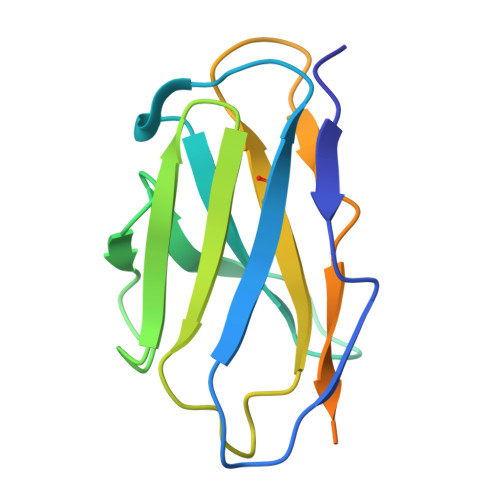Molecular basis of human taurine transporter uptake and inhibition.
Du, B., Cheng, L., Xie, J., Chen, L., Yan, K.(2025) Nat Commun 16: 7394-7394
- PubMed: 40789850
- DOI: https://doi.org/10.1038/s41467-025-62857-w
- Primary Citation of Related Structures:
9K0C, 9K0N, 9K0O, 9K1B, 9K1F, 9K1H, 9K1I, 9K1V, 9K1X, 9K1Z, 9K21 - PubMed Abstract:
The taurine transporter, TauT, regulates various taurine-mediated physiological and pathological functions by facilitating taurine uptake in a sodium- and chloride-dependent manner. Dysfunction of TauT is associated with male infertility, retinal health and cancers. Despite extensive research efforts, the intricate structure of TauT, the molecular mechanisms underlying taurine transport, and the inhibition mechanisms involved, all remain elusive. Here, we present eleven cryo-electron microscopy (cryo-EM) structures of TauT. The structures TauT bound to substrate (taurine) and substrate analogues (β-alanine, guanidinoacetate, and γ-aminobutyric acid), are captured in distinct conformations. Combining with biochemical analyses, these structures reveal that amino acids Leu134 and Glu406 play a crucial role in substrate specificity within the GABA subfamily. Five distinct inhibitors, namely, piperidine-4-sulfonic acid, imidazole-4-acetatic acid, 5-aminovaleric acid, nipecotic acid and homotaurine, stabilize TauT in an inward-open conformation. Conversely, guanidinoethyl sulphonate stabilizes TauT in the occluded state. These structural insights offer a comprehensive understanding of how these inhibitors counteract taurine transport. Collectively, these findings advance our understanding of the substrate coordination and inhibitor recognition mechanisms of TauT.
- Shenzhen Key Laboratory of Biomolecular Assembling and Regulation, School of Life Sciences, Southern University of Science and Technology, Shenzhen, 518055, China.
Organizational Affiliation:





















